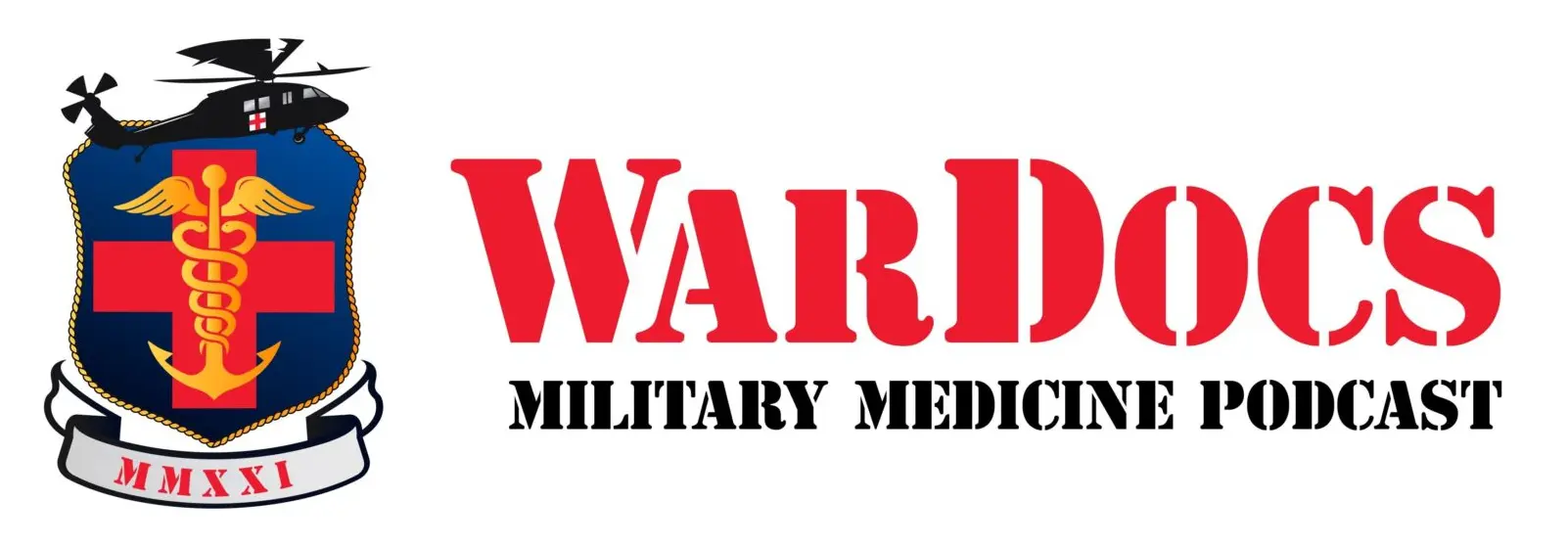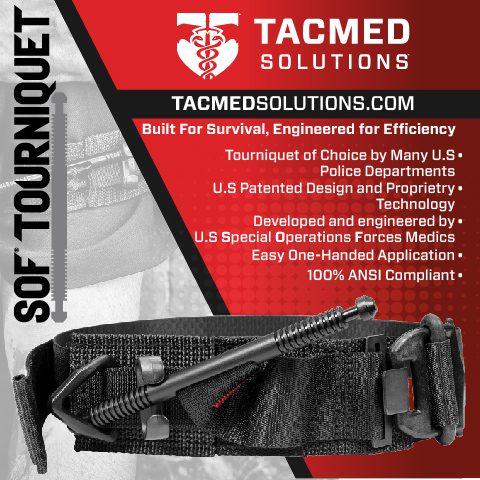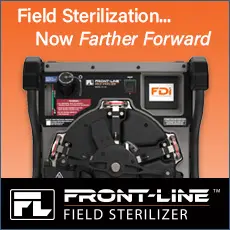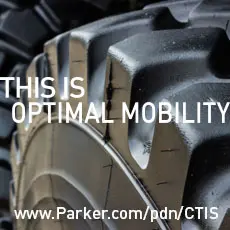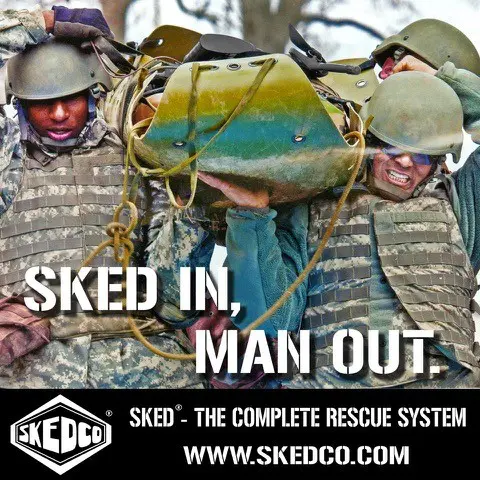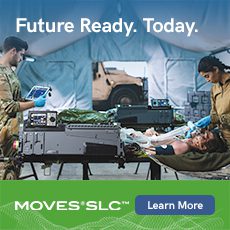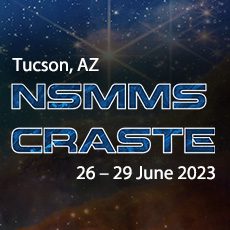AMPV: Evolution in Multi-Threat Defeat
The U.S. Army is testing its Armored Multi-Purpose Vehicle (AMPV), a significant improvement over the long trusted M1113 Armored Personnel Carrier.
By Mark Schauer, Yuma Proving Ground
From Armor & Mobility, Fall 2022
The M113 Armored Personnel Carrier (APC) and its variants are iconic vehicles in the history of mechanized infantry.
First fielded in 1962, the M113 was ubiquitous during the conflict in Vietnam and has seen service in virtually every American military action in the ensuing decades.
Fast forward to the recently developed Armored Multi-Purpose Vehicle (AMPV) incorporating a long list of upgrades that make it significantly more advanced than the M113, we encounter many more expectations for the worldwide-warfighting environments.
Modular Variation for Meeting Myriad Environments
The AMPV’s five variants—a general purpose vehicle, mission command vehicle, mortar carrier, and medical evacuation and medical treatment vehicles– have nearly 80% more interior volume than the M113, and significantly more power, survivability, and maneuverability. The cooling and electrical systems are also more robust to accommodate both existing and future upgrades. It boasts the same powertrain and suspension system as the Bradley Fighting Vehicle and M109A7 self-propelled howitzer, which eases maintenance and logistics challenges for all three vehicles in the field.
The AMPV has undergone extensive testing at all three of U.S. Army Yuma Proving Ground’s natural environment test centers—Yuma Test Center outside Yuma, AZ; Cold Regions Test Center at Fort Greely, AK; and, most recently, at Tropic Regions Test Center (TRTC) in the Panamanian jungle. “It’s the first tracked vehicle we’ve seen in the tropics since the 1980s,” said Rolando Ayala, TRTC senior test officer. “We were excited to have the opportunity to test it.”
With tropical regions comprising nearly 40% of the world’s land surface and serving as home to more than half the world’s population, the U.S. Army ensures military equipment works as it should in this extreme tropical environment. Drenched by well over 100 inches of rain per year, the consequences of a tropical environment can be disastrous to all manner of kit and gear. Thick vines and vegetation can strip exterior components from transiting vehicles, insects can eat through Kevlar, and high humidity and salinity in the air can rapidly corrode even stainless steels. Vehicles in particular face special challenges: mud and other jungle biomass caught in wheels can degrade performance, or worse stop it completely in its tracks, and extreme humidity can cause water intrusion in fuel or lubricants.
Rigorous Paces to Address Unforgiving Surroundings
Following a successful test of the Stryker combat vehicle in recent years, TRTC used the same test facility for the AMPV. The testing environment includes a 5,000 square foot office and vehicle maintenance bay facility and miles of improved, unimproved, and cross-country road courses through double and triple canopy vegetation, which require regular maintenance to keep them from being reclaimed by the jungle.
After months of planning, the vehicle was slated to arrive for testing in October 2021, and personnel from Yuma Test Center— vehicle operators, mechanics, and a data collector with experience testing the AMPV—traveled to Panama to support TRTC’s efforts. They arrived anticipating that they would pick up the vehicle from port on a Saturday.
“We were monitoring on Friday and everything was OK,” recalled Ricardo Martinez, TRTC’s logistician. “On Saturday, the captain decided to detour.”
Apparently fearing that his vessel would lose its reservation to pass through the Panama Canal, the captain had unilaterally decided to proceed to another port and return many weeks later with the cargo.
“The vessel wasn’t going to stop, but Ricardo convinced the management at one of the largest container transshipment terminals in the region and asked them to expedite the unloading of the vehicle. This action is unheard of, in the international shipping industry.” said Ayala. “You wouldn’t have that type of support at these ports without their willingness to help, and that willingness was thanks to Ricardo establishing a relationship with them well in advance.”
Though a weeks-long delay was averted, the unexpected diversion of the ship meant the team had to pick up the vehicle from the port in the middle of the night and make last minute changes to obtain the flatbed truck and police escort they needed to deliver the vehicle to the test site.
The platform had undergone substantial testing in Yuma and Alaska prior to arriving at TRTC, and TRTC test officer Tim Quintero had decades of experience testing in the former. Yet tropical testing in the most punishing jungle environment of Central America has its own unique challenges.
“Testing in this type of environment is a completely different animal than testing in the desert,” he said.
After 60 days of exposure testing, the team began running miles of simulated missions across road courses that ranged from improved and unimproved to cross-country jungle that turned to iron-gripped muck when heavy rains fell. As they traversed these courses, test vehicle operators continually verified performance of all the platform’s sophisticated electronics, and samples of the vehicles’ fluids were collected and analyzed at various points throughout the tests. Testers had the benefit of comparing both the performance of tracked vehicles at TRTC in decades past along with the recent AMPV performance data from Yuma and Alaska.
“I had a lot of reach-back capability from YTC’s combat automotive testers,” said Quintero. “They helped me out with any questions I had related to the vehicle, which they had a lot of experience with.”
The AMPV’s tracks gave it a significant advantage over a wheeled military vehicle in the worst of the jungle terrain, but testers had to be prepared to recover the vehicle with the aid of a bulldozer if the slick, muddy course caused the test vehicle operator to lose control.
“We are dealing with an 80,000-pound vehicle,” said Carlos Mora, test engineer. “Recovery operations are more challenging.”
Furthermore, the test engineers purposely left the vehicle uncleaned after movements each day to simulate the worst possible conditions Soldiers might experience in a combat theater.
Navigating Challenges to Testing Accessibility
Unlike other Army test centers, TRTC owns no land and thus relies on host nations to permit testing. The American embassies and associated military groups within each delegation in the countries TRTC operates in, recognize the value in supporting the test center’s mission and assist in securing the necessary permissions to conduct these important evaluations.
“As an Army section chief, I want to do whatever we can to get the best equipment in the field,” said Maj. Andrew Rember, Army section chief in the U.S. Embassy’s Office of Defense Cooperation. “I’m glad we’re upgrading from the M113, because it never seemed to keep up with the Bradleys.”
In the current world environment, natural environment testing to ensure equipment can be successfully utilized anywhere an American Soldier could deploy is more important than ever.
“If we don’t do natural environment testing in the tropics, we are doing a tremendous disservice to our military and soldiers,” said Ernest Hugh, TRTC director. “You don’t want to give them equipment that is going to break down or rust away. Testing in a natural environment is key.”

